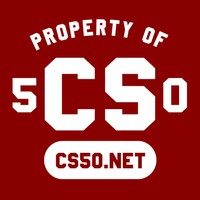ລະບົບນິເວດທີ່ສຸດເຊັ່ນ: ຮ້ານທີມແມ່ນບໍ່ວ່າຈະເປີດຫຼືອະນຸບານ. ແຕ່ເປັນຫຍັງຈຶ່ງບໍ່ສາມາດພວກເຮົາມີທັງ? ດີ, ພວກເຮົາສາມາດເຮັດໄດ້ — ທັງຫມົດທີ່ທ່ານຕ້ອງການເປັນສາມພາສາ: ເຜີຍແຜ່, ຄົ້ນຫາ, ແລະ ຄື. ວ່າໄປສໍາລັບເຕັກໂນໂລຊີແລະສິ່ງອື່ນ.
ປົກກະຕິແລ້ວມີສອງທາງເລືອກໃນເວລາທີ່ທ່ານຕ້ອງການທີ່ຈະເຜີຍແຜ່ app ເປັນ: ເຜີຍແຜ່ບາງສິ່ງບາງຢ່າງເຊັ່ນ: iOS App Store (ບ່ອນທີ່ປະຊາຊົນຈະຊອກຫາ app ຂອງທ່ານ, ແຕ່ຄວາມຄິດເຫັນ Apple ສາມາດປະຕິເສດການຍື່ນສະເຫນີຂອງທ່ານ) ຫຼືພຽງແຕ່ເຮັດໃຫ້ມັນສຸດເວັບໄຊທ໌ຂອງທ່ານ (ບ່ອນທີ່ມັນເປັນການງ່າຍທີ່ຈະເຜີຍແຜ່, ແຕ່ວ່າບໍ່ມີໃຜຮັບປະກັນຈະບໍ່ມີໃຜເຫັນ.) Not the greatest set of options.
Isn’t there a way to combine the strengths of both of these to make for the best possible experience for both publishers and consumers? I think there is. It’s called an open and curated ecosystem. Let’s take a look at:
- What open ແລະ curated ecosystems are
- Examples of open and curated ecosystems
- What you need to make an open and curated ecosystem
- Examples of these ecosystems beyond just technology
and see if we can discover something about the power of crowdsourcing, innovation, and the three verbs ເຜີຍແຜ່, ຄົ້ນຫາ, ແລະ ຄື.
Curated vs. open ecosystems
The iOS App Store and open internet, among others, are app ecosystems — places where apps can be published and found. And I think the big factors that differentiate one ecosystem from another are whether the ecosystem is open, where anyone can publish apps and whether it is curated, where the best apps rise to the top and users are assured quality apps. That’s the major difference between the iOS store and the internet at large, which I mentioned earlier.
Let’s look at examples of curated and open ecosystems and what differentiates them.









